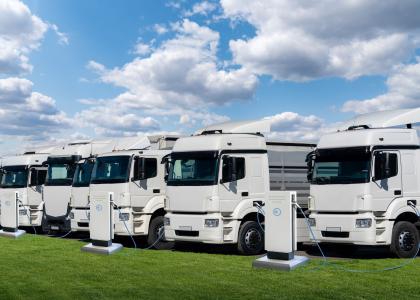Energy efficiency as a service, or EEaaS, is a promising approach to financing energy-saving upgrades, but it must expand rapidly to help retrofit buildings at the speed and scale that climate change demands. An ACEEE report, published today, shows how utilities could provide the needed spark by offering EEaaS to their customers and supporting its growth.
The as-a-service model is familiar to anyone who has ridden in an Uber or watched a movie over a streaming platform: customers pay for a service instead of owning the technology. In the case of EEaaS, a service provider might install efficient lighting or HVAC systems in a customer’s facilities; the provider owns the equipment for the duration of the contract. In exchange, the customer regularly pays the provider a fee, which can be fixed or based on savings. After the contract expires, the customer typically can choose to purchase the equipment at fair market value (accounting for depreciation), extend the contract, or, less commonly, return the equipment.
This system helps spur retrofits because the provider takes responsibility for the equipment’s upfront costs and subsequent performance risk, barriers that too often prevent businesses from making needed upgrades.
Although their involvement in EEaaS is still new and mostly in the pilot phase, utilities are logical candidates to help scale it in the marketplace. They are generally experts on providing energy services and efficiency programming to customers, and as states adopt stricter carbon reduction targets, EEaaS can help utilities meet their energy efficiency goals of saving energy and reducing carbon emissions.
Two Utilities Show Emerging Models
Duke Energy One, a subsidiary of one of the largest investor-owned utilities in the United States, spurs decarbonization and reduces energy waste without the use of ratepayer or other funds through its Direct Efficiency℠ product. Partnering with EEaaS provider Allumia, which provides the technology and helps with project management, Duke Energy One recently entered an EEaaS arrangement with a North Carolina-based convenience store distributor that sought to make energy efficiency upgrades to the lighting in its warehouse facility.
Duke Energy One funded, developed, implemented, and maintains the energy saving upgrades at the facility with no upfront capital required by the customer. The customer makes service payments to Duke Energy One, based on a percentage of energy savings, and is projected to save approximately $117,000 in energy and maintenance costs over the next 10 years.
Across the country, Seattle City Light’s EEaaS pilot program, launched in 2019, is based on the Metered Energy Efficiency Transaction Structure (MEETS™). The first building to complete an application for the program is a 500,000 square-foot office building Seattle built in the 1970s. The planned upgrades, which include LED lighting upgrades and a cooling loop heat-reclamation system, among others, are expected to reduce energy use by almost one-third (32%). Over the 20-year term of the agreement, Seattle City Light will pay the provider an amount starting at 11 cents per kWh of energy saved (with a 2% per year escalator).
An Opportunity for Utilities to Meet Business and Climate Goals
Through EEaaS, utilities can leverage brand recognition and provide value to their customers; this is especially important in deregulated markets as a strategy for utilities to stay engaged and reduce the chances that customers take their business to another energy provider.
EEaaS can open the door to greater energy savings than traditional energy efficiency programs offered by utilities. Not only does EEaaS overcome the common customer-side barriers of upfront cost and performance risk, its service providers and program sales teams will be motivated to seek customers likely to have the highest realized energy savings.
Existing efficiency incentive programs will not be enough to achieve the broader greenhouse gas emissions and energy reduction goals sought by states, local governments, and utilities. At current rates it will take 60 years to complete whole-building retrofits on commercial buildings.
Given the urgency of the climate crisis, innovative, long-term strategies are needed to implement energy upgrades across the built environment. While obstacles remain, EEaaS offers an important opportunity for commercial and industrial buildings to reduce energy consumption and meet utilities’ business and climate goals.





